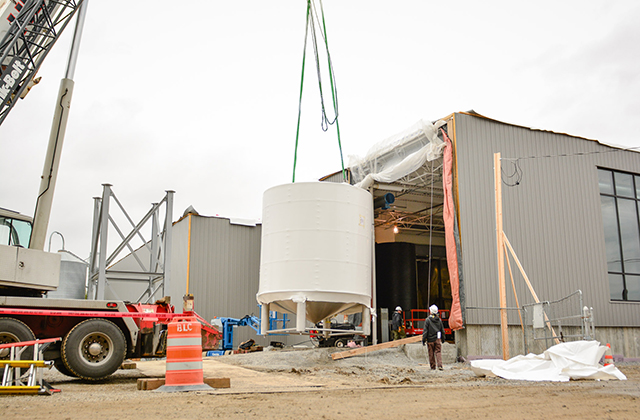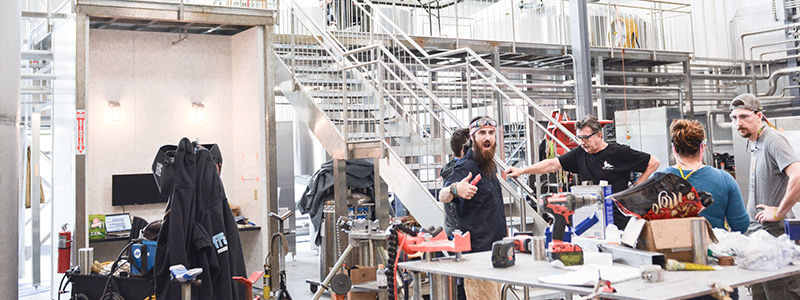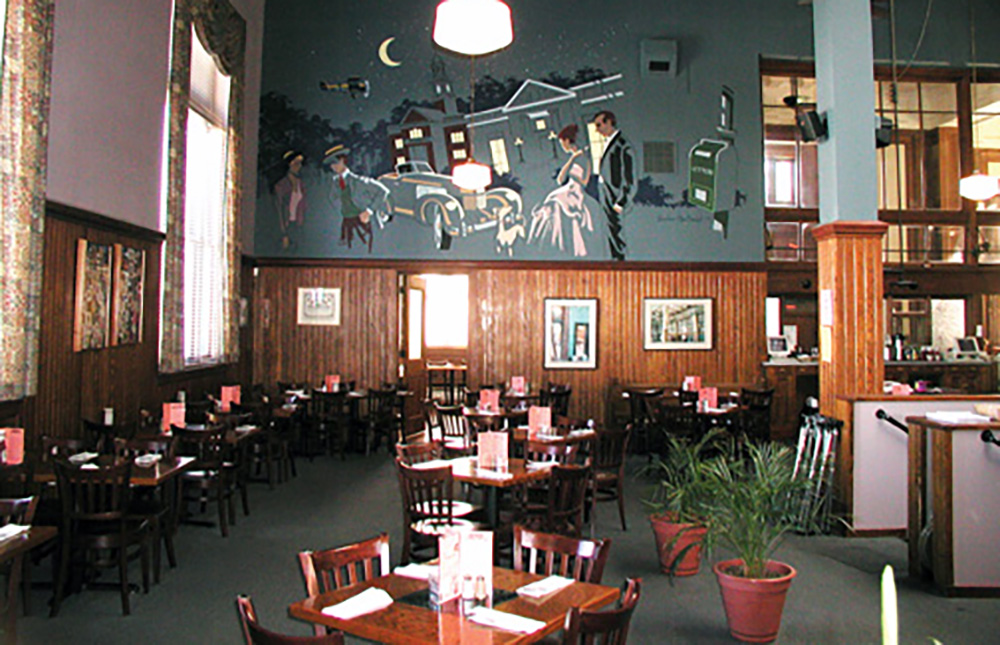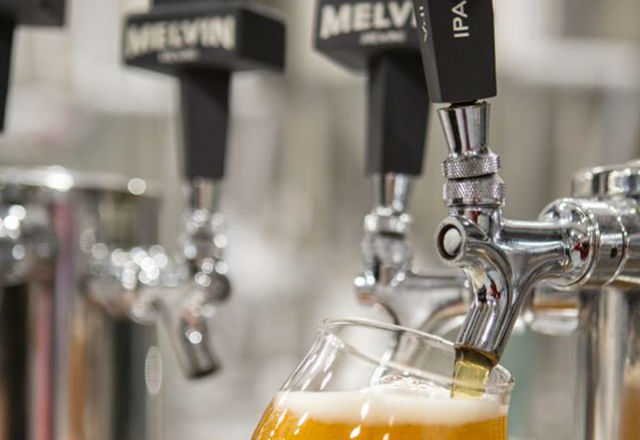
There’s many different materials used when it comes to creating a new facility or expanding on a current one. Finding those resources are only a part of the job.
Working with vendors, contractors and a plethora of other professionals that may not understand fully the scope of what you as a brewer or decision maker want out of the facility can slow down projects or cause problems after the work is done.
Keeping on top of even minute details can be frustrating and time consuming, especially for those that just want to get beer made and out the door. But the effort spent planning, fretting and hand-holding can equal higher quality beer with more consistency while reducing costs both up front and down the road.
In Middlebury, Vermont, Otter Creek recently underwent a 8,500 square foot addition to its production facility, making room for a 120-barrel brewhouse while adding more space for a new laboratory, a conference room with more office space, a hop cooler and a locker room for employees.
“It’s been amazing to go from a feasibility study to see what this facility is capable of and talk it through as a company and take the next step,” said Otter Creek Brewmaster Mike Gerhart. “We decided we were ready for this and make the leap.”

In Placentia, California, The Bruery has added a taproom to its Bruery Terreux facility in Anaheim.
Patrick Rue, founder of The Bruery said the new taproom is the conversion of a former leased warehouse used for barrel aging that it began using in 2011. By 2014 he and his team saw a need to split the wild and sours from the rest of the portfolio and give it a new 21,000 square foot home. Along with plenty of room for two 250 bbl foeders and 1,700 oak wine barrels, Bruery Terreux has a 2,300 square foot tasting room and a 1,400 square foot patio.
While the paint is still drying at Otter Creek and things other than the functioning brewhouse are completed, Gerhart said the last two to three years has been all about planning for growth.
It began with feasibility studies to see what could be done physically to the Otter Creek brewing campus which included details on such things as how many trucks would be coming down the street to figuring out the future floor plan. Once it established a baseline plan on needs, shopping and research into brewhouses began.
“It’s just like buying a car,” Gerhart said. “All cars you can put in drive and go from here to there but one can cost $10,000 and another $100,000, so at the end of the day they still do the same thing.”
Gerhart added that the focus constantly revolved around what would make the best beer. Not what looked the best or wowed people. The brewhouse, he said is “no showpiece.”
“That doesn’t add to the value of the beer that comes out of it,” he said. “We have everything in place that I as a Brewmaster require in instrumentation, documents and control and process automation. But we did not go crazy.”
He also said the team wanted to take care of the brewery’s employees, which he considers family. That meant cutting back on “wants” which meant, for example, the conference room is just a table with chairs, nothing fancy. Instead, it sunk money into expanding its capabilities in the lab and a hop cooler for storage.
“We put the majority of our efforts on what will help us make more beer, but efficiently and at the same time we have got our family here to take care of as well,” Gerhart added. “What makes better beer trumped all the creature comforts. The conference room isn’t high-end, it’s a room with chairs and a table. That doesn’t make better beer, the brewhouse does. We tried to keep that hat on the entire time this process evolved.”
For Rue, The Bruery’s process to open the taproom in July of 2016 came with nary a hiccup.
He did say that while digging up the concrete to create new drains, it was noticed that the 30-year-old cast-iron sewer lines had corrosion, which added some expense and time to the project.
“Below the ground, things can have some of the biggest surprises,” Rue said.
He noted that having worked with his contractors before in previous construction and expansion projects gave him a level of security and ease during the process.
“They know what we want in terms of level of quality you expect and it works out fine,” he said.
Gerhart said he was very hands-on in his role, from the development of plans, to layout, all the way to completion.
“It’s small things: ‘Where is the light switch and what is the cover of the back plate?,’” he recalled. “Those details, you will have 6,000 of them a day and those contractors want answers. If you aren’t thinking about it upfront, you will be in a very expensive situation because change orders cost money and that’s where it goes from X amount of dollars to X times three.
“You need to have your homework done because everyone you hire expects you to have it done.”
Surrounding yourself with a team that is vast and knowledgeable is helpful. As Gerhart pointed out, architects don’t make beer and brewers don’t build buildings.
Along with a Plant Manager Andrew Charron, Director of Brewing Operations Matt Quinlan and others from the brew team, Gerhart fused everyone’s background to help construct what they would find as most efficient and help with quality.
“It was never one person’s decision on any area it was a consensus that stems from a lot of us talking it out and saying ‘Well I worked at this one place and they really fucked this up and I don’t want a facility where the floors aren’t sloped right to the drains,’ or all these little details you only know if you put rubber boots on and stood on that floor every day,” Gerhart explained. “Our architect and engineering firm we worked with would sit down with us and I would tell them what I want and they would look at me like I was crazy. They are design builders, they don’t brew beer. They don’t get that flow so that’s why you need people that live and die from the process to be a part of it.
“An engineer can get you there, they can tell you how many BTUs you need in a boiler and an architect to help it look pretty and you can say it looks good, but it would suck to have to work there every single day.”
Gerhart explained a situation early in the process that showed his team’s level of dedication.
“Just the topic of drains was a point of contention,” he recalled. “The drains kept getting moved by our firm in Germany or moved by our designers in Vermont and we couldn’t get a consensus and the floor pitch wasn’t right and we weren’t getting answers.
“I took our engineer and architect and director of brewing operations, drove to Boston, got on a plane, flew to Germany, drove straight to their offices, spent 12 hours debating with them where the drains should be, we signed the plan, went to sleep, went to the airport and we came home. It meant that much to us. Every single detail. Whatever you put in, that’s it. Once all those big yellow bulldozers drive away it’s your building and that’s what you have got. People can walk through this building and say ‘hey that’s pretty’ and have no clue what rabbit holes we have gone down.”
Gerhart wasn’t shy to say that breweries that think it can do construction on its own and act as its own general contractor shouldn’t do it.
“If you think you can do it on your own, you haven’t been doing this long enough to realize you can’t,” he said. “Especially if you need to have your day job and run the existing facility.”
He counter-pointed that by adding that just handing over ideas to a general contractor shouldn’t be done either.
“It goes to show you haven’t been doing it long enough either,” he said. “Even if you are paying someone to run this entire job, you still have to sit right next to them. You wait for them at the door in the morning and walk in with them and when they walk out for the day, you walk out with them.
“If they show up at 7, you are there at 6:50. If they leave at 4, you are leaving at 4:30. If you think you can hire someone to just make a dream brewery that you wanted and you will take the keys and make beer, you haven’t been doing this long enough.”
Those stances and his bird-dog attitude probably didn’t make Gerhart the most popular person on the construction site, but he added that going into the process knowing this helps as well.
To help ease tensions for all the “you are doing this wrong,” and “don’t do it that way,” diatribes he knew he would have, Gerhart made the workers putting together his brewhouse a part of the Otter Creek family.
Every Saturday he spent his own money to cook lunch for the crew. Every Friday he handed out six-packs of beer to each worker and the Otter Creek 50 percent discount on food at the pub and two free pints each day was extended to the crew as well.
“They are working on our brewery, a place we spend more time than at home, we had to take care of them,” Gerhart said. “Yes, you are going to tell them they did something wrong, but you have to keep them on your good side because the things they could do and put up sheet rock and say “they’ll never know” that can happen if someone doesn’t want to be there any more or they don’t like the client. It could happen.
“It’s a very rewarding experience but it’s not at all like hiring someone to put on a garage at your house. The amount of infrastructure needed even for an upgrade is something you need a team of experts for. I don’t know anyone who can do it on their own.”






Be the first to comment